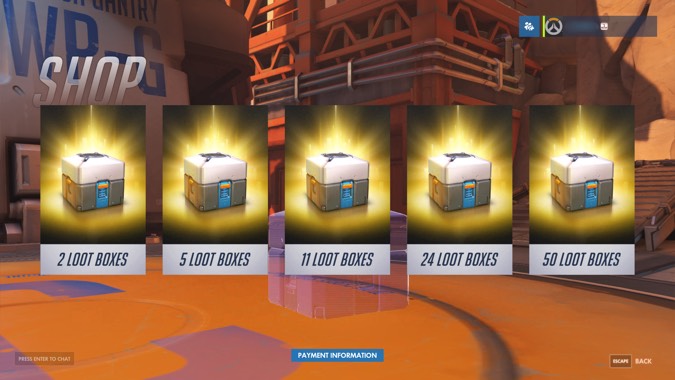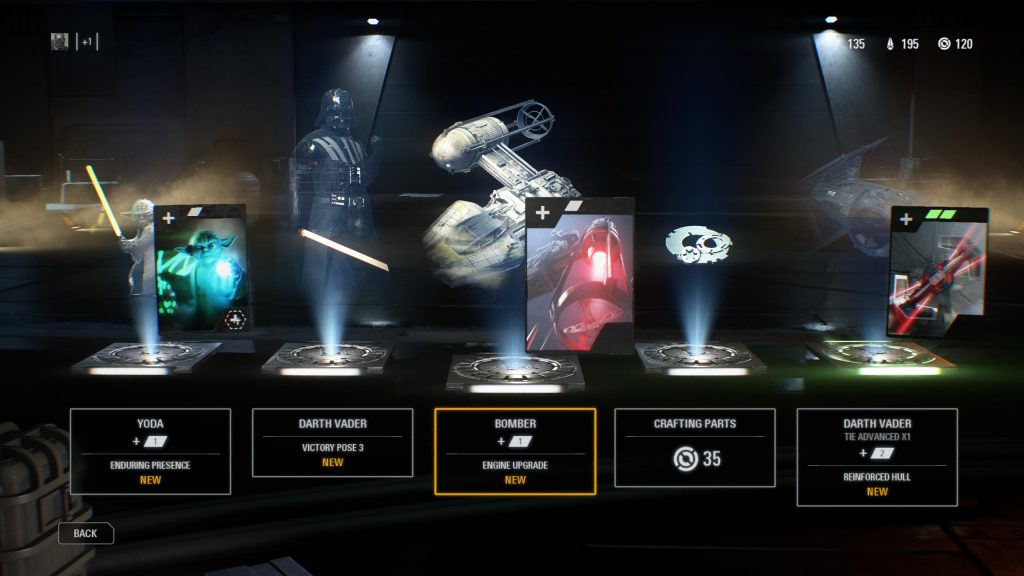Log onto any gaming news site or type in a specific hashtag on Twitter, and you’ll get the impression that these are the end days for gaming. While some players frequently cry wolf about the medium’s death, it would be remiss to discount the level of discussion and spite being thrown in the direction of games like Middle Earth: Shadow of War and EA’s Star Wars Battlefront II. This recent influx of fury is in response to the inclusions of loot boxes and microtransactions in those and other major titles.
Microtransactions and loot boxes are nothing new (Overwatch has been at it for more than a year old now), but their inclusion in AAA titles has hit an all-time high. While they likely increased a lot of publisher bottom lines this year, they’ve also made people more aware of the problematic aspects of this monetization strategy. There is no mass boycott as of now (and let’s be honest, it wouldn’t be much of one), but tensions are running hot. All of this dust-up is predicated on the question: How should video games be sold?

Piling Up the Loot Boxes
The research coming out regarding loot boxes isn’t encouraging. Kotaku’s Heather Alexandra investigated and broke down the psychological manipulation that goes into loot boxes. The ESRB issued a statement that it has no plans to mark these boxes as gambling. GameStop’s social media team picked a fight with various customers. Activision was awarded a patent that would encourage microtransaction purchase through manipulative matchmaking. Electronic Arts closed Visceral Games, after “closely tracking fundamental shifts in the marketplace.” A statement which some developers found telling:
Seems Visceral got shut over microtransactions, the popularity of sandbox/roguelikes, Twitch/YouTube as marketing, and publisher financials.
— Rami Ismail (@tha_rami) October 17, 2017
Now here we are, facing another standoff between the people who buy and play video games and those who make and sell them. All over the one thing sure to ruin any tenuous relationship: money.
It’s no secret that games cost money. It’s also no secret that the costs of game development has increased significantly over the years. Development teams have to account for new engines, multiplayer servers, focus testing, and the dreaded feedback of fans. Studios are often located in cities with high costs of living; and I doubt anyone would say video game developers shouldn’t be making a living wage. That money has to come from somewhere.

While I would enjoy adding to the loot boxes debate (spoiler: I’m against them) at this point that whole conversation has deteriorated to rage induced yelling more than anything. Eventually the tempers are going to go down, but the question will remain. How can publishers make a profit without screwing over their customers?
Fixing the Business
Finding an answer to that is difficult. This is largely because we rarely get all the necessary information. Publishers often keep game budgets secret for years, setting incredibly high sales projections seemingly out of nowhere. Others never release concrete numbers of sales, and a lot of info only comes out through investor calls. Pay is also hard to track, with so many animators and coders stuck in freelance or contract positions. Most have to go from studio to studio and take what they can get.
What we the audience does see however, is marketing. Triple-A games often have marketing budgets as high as their development costs, if not more. Marketing is all about optics, and optics I can work with. If budgets aren’t going to come down and that money has to come from somewhere; here’s my suggestion: Charge more for the games.

Consider again Star Wars Battlefront II. Battlefront II is releasing in two editions. The standard edition comes with the base game and the promise of free updates, as there is no season pass. This version costs a MSRP of $59.99. A second edition called the “Elite Trooper Deluxe Edition” includes multiplayer upgrades that would normally be earned through participation in gameplay. That version is $79.99.
Clearly there’s already incentive for some players to pay more money before they ever have to purchase loot boxes. Loot boxes only expand that divide. It will surely discourage many players from sticking around the multiplayer mode. Why create this divide at all? The simpler answer would be to offer one complete version of the game and charge $79.99
There’s No Perfect Solution
The reason they haven’t already done this is, of course, that customers would get mad about a price increase. Games live and die by marketing and a higher price might not be the most fun sell, but it is the easier one.
To increase the industry standard from $59.99, game publishers and developers would need to be more honest. They’d have to share sales data consistently and disclose budget details. Lead developers should be able to talk about their pay without retaliation rather than being forced to defend corporate decisions to a rabid fan base.
https://gfycat.com/TiredWarmDiplodocus
This shift could free many other games from that same $59.99 expectation, except in the other direction. Under the current business model, games are either complex and expensive triple-A affairs, or have to rely on smaller resources and low pricing through Steam sales to break even. We have no middle ground, no tiers to work within. Games as a business cannot sustain itself this way forever.
Just Tell the Truth
Now, I get it. There’s earnings data demonstrating the financial success of microtransactions and loot boxes. Psychological data suggests it’s not hard to convince many players to pony up extra cash after their initial purchase. These transactions may be sketchy, but until now they haven’t received the amount of backlash a full price hike would.
I understand the justified fear that game sales might dip if prices were increased. On the other hand, there already is a version of Battlefront II that will be $79.99. Meanwhile, players continue buying DLC, microtransactions, and loot boxes. Basically, the business model has already changed, it just hasn’t been upfront about that.

Gaming is an expensive hobby. Players expect to spend some money on the things they enjoy. Increasing prices may mean folks will need to pick which titles to buy more carefully. But in the end, the optics of honesty are more likely to keep those folks invested longer than the optics of a loot box.
Latest posts by Travis Hymas (see all)
- Selling Games & Making Money Without Loot Boxes - December 11, 2017
